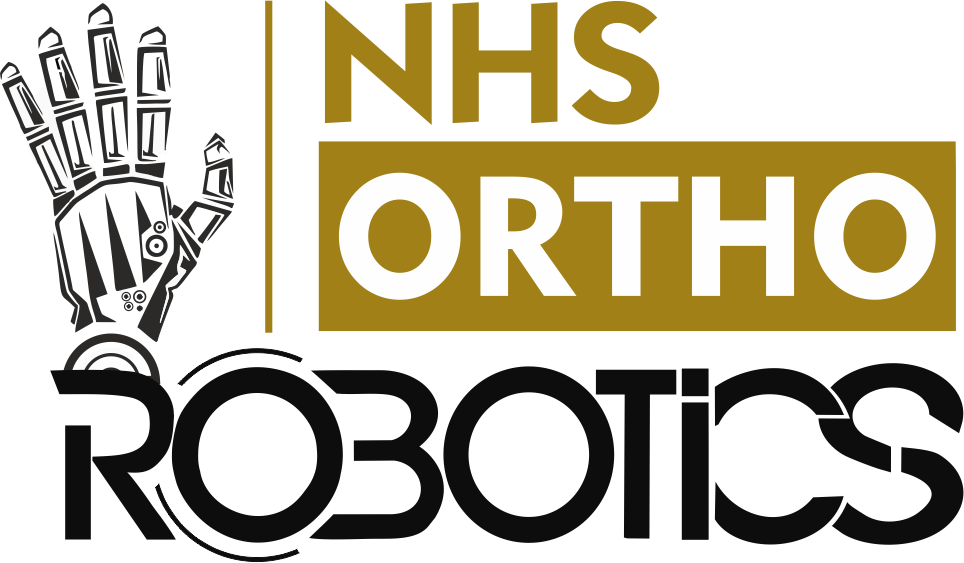Hip replacement surgery has come a long way over the past few decades. While traditional hip replacement methods have restored mobility for millions, the emergence of Robotic and AI-assisted (R.I) Hip Replacement is redefining precision, safety, and recovery outcomes. If you're considering hip replacement surgery, understanding the differences between traditional techniques and modern R.I procedures is essential for making an informed decision.
At the forefront of this orthopaedic advancement is Dr Shubhang Aggarwal, Director and Senior Orthopaedic Surgeon at NHS Ortho Robotics (a unit of NHS Hospital). With 20+ years’ experience and a team of five expert orthopaedic surgeons, Dr Aggarwal is delivering unmatched outcomes using cutting-edge technology in joint replacement.
Let’s explore the key differences and help you decide which approach might be the best for you.
-
Surgical Approach and Precision
Traditional Hip Replacement involves manual techniques where the surgeon relies on visual assessment, experience, and conventional tools to align and fix the prosthesis. While many surgeons are highly skilled, there’s always a margin of human error that could affect implant alignment or leg length accuracy.
On the other hand, R.I Hip Replacement utilises robotic arms and artificial intelligence to guide the procedure with sub-millimetre accuracy. The AI-powered system creates a 3D model of your hip, allowing the surgeon to plan the operation in advance and execute it with exceptional precision. This level of accuracy reduces risks of misalignment, premature wear, and revision surgery.
"We combine our experience with the power of robotics and AI to deliver results that were once considered impossible," says Dr Shubhang Aggarwal.
-
Customisation and Planning
Traditional surgery follows a more standardised approach. Although implant sizes vary, the procedure often lacks personalised mapping of bone structure and joint mechanics.
In contrast, R.I Hip Replacement offers a customised surgical plan tailored to each patient's anatomy. Using pre-operative CT scans, AI algorithms determine the ideal implant position, angle, and size, enhancing long-term success. This personalised approach is one of the major reasons why many patients at NHS Ortho Robotics experience quicker recovery and greater comfort post-surgery.
-
Invasiveness and Recovery Time
Traditional hip replacement may involve more soft tissue dissection and longer incision lengths, potentially leading to higher blood loss and longer hospital stays.
R.I Hip Replacement uses minimally invasive techniques, assisted by real-time imaging and robotic guidance. This means less trauma to muscles and soft tissues, reduced blood loss, and fewer complications. At NHS Ortho Robotics, many patients experience same-day or one-day discharge, helping them return to their normal routines much faster.
-
Surgeon Experience and Technology Synergy
Even with the most advanced equipment, a successful outcome depends on the hands that operate them. At NHS Ortho Robotics, surgeries are led by Dr Shubhang Aggarwal, who brings over 20 years of surgical expertise and a team of five highly skilled orthopaedic surgeons. This combination of human skill and cutting-edge technology ensures safe and consistent results.
Their reputation as pioneers in robotic joint replacement surgery makes NHS Ortho Robotics the best place for patients seeking high-quality orthopaedic care.
-
Patient Outcomes and Long-Term Results
Numerous studies show that robotic-assisted surgeries have fewer complications, better implant longevity, and higher patient satisfaction compared to traditional methods. With more accurate alignment and minimal tissue disruption, patients undergoing R.I Hip Replacement report less pain, better joint function, and a faster return to mobility.
Patients treated at NHS Ortho Robotics often share stories of walking unaided within days and resuming daily activities with minimal discomfort – something rarely achievable with traditional techniques.
Is R.I Hip Replacement Right for You?
While R.I Hip Replacement offers many advantages, it may not be necessary for every case. Factors such as age, bone quality, pre-existing conditions, and individual preferences also play a role in deciding the appropriate surgical method.
However, if you’re seeking the most advanced, precise, and minimally invasive approach, and wish to place your trust in a centre with 20+ years of clinical excellence, led by Dr Shubhang Aggarwal and supported by a dedicated team, then NHS Ortho Robotics is the ideal choice.
Final Thoughts
Choosing between traditional and robotic hip replacement isn’t just about technology – it's about outcomes, recovery, and trust. Thanks to innovations in AI and robotics, combined with experienced hands, R.I Hip Replacement is emerging as the gold standard in modern orthopaedics.
For patients in search of the best care, cutting-edge technology, and a team of experts committed to excellence, NHS Ortho Robotics (a unit of NHS Hospital) stands out as the best place for your hip replacement journey.







